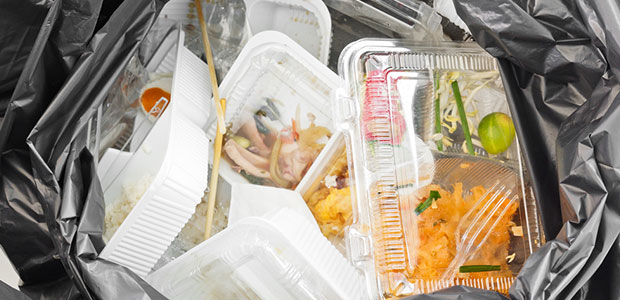
Food Waste Initiative: The What, When, and How of a New, American Food Waste Solution
As of Oct. 30, the Winning on Reducing Food Waste Initiative launched by three federal agencies is making major strides in the food industry to address the widespread issue of wasted food products. Here’s what it’s all about.
Late last month, the Winning on Reducing Food Waste Initiative was launched by three federal agencies: the U.S. Department of Agriculture (USDA), the U.S. Food and Drug Administration (FDA), and the Food Waste Reduction Alliance (FWRA). The initiative was proposed last year, and its details of the collaboration are finally seeing finalization.
We all get that nagging feeling in our heads when we toss bad broccoli into the trash or tell the waiter we aren’t taking our leftovers home—or maybe we don’t. Massive amounts of food get disposed of every day in a number of forums: homes, restaurants, grocery stores, airports—you name it. And still, people in America starve on a daily basis. There is an undeniable gap between mouths overly fed and mouths unfed.
In the U.S. alone, more than one-third of all available food goes uneaten. Food is also the single largest type of waste in our daily trash. And while recent years have shown significant strides in highlighting and mitigating food waste, there is still so much to be done.
The Winning on Reducing Food Waste Initiative aims to tackle these issues, however complex they may be. The USDA, EPA, and FDA recently formalized industry education and outreach efforts with a number of players in the food industry such as the Grocery Manufacturers Association, the Food Marketing Institute, and the National Restaurant Association—the three founding partners of the FWRA.
Working with the FWRA is crucial to affecting the food production and distribution industry in the U.S., given it has hands in every sector of the game. The FWRA represents three major sectors of the supply chain: food manufacturing, retail, and restaurant and food service, according to the FDA press announcement. Plus, the Initiative’s goals align with the Alliance’s three goals: to reduce the amount of food waste generated; to increase the amount of safe, nutritious food donated to those in need; and to divert food waste from landfills.
Addressing this issue is not only beneficial for the number of people who go hungry every year. It has incredible environmental and communal impacts, too. FDA Commissioner Ned Sharpless, M.D. explains:
“The FDA strongly supports our shared goal of reducing the amount of food that Americans waste through important efforts like today’s agreement,” said Sharpless. “The issues of food waste and food safety go hand in hand and we will continue to work with our federal partners and other stakeholders on enhancing our efforts to reduce food waste and do it safely. We are committed to doing all that we can to support safe and sound food policy decisions that are good for our families, good for our communities, and good for our planet.”
The Initiative and partnership between these federal agencies are part of a broader goal of reducing food loss and waste by 50 percent by 2030—an ambitious but necessary call for action.
“Reducing food loss and waste has many environmental and social benefits. By collaborating with these major segments of the food supply chain, we are making progress toward the national goal to reduce food loss and waste by 50 percent by 2030,” said EPA Administrator Andrew Wheeler.
Plus, other groups are in on this goal for 2030. The 2019 Food Waste Summit, hosted by ReFED (a nonprofit that uses data to combat food loss and waste), recognized the growing group of U.S. Food Loss and Waste 2030 Champions—a group of organizations that have made a public commitment to reduce food loss and waste in their U.S. operations by 50 percent by 2030.
The Winning on Reducing Food Waste Initiative is still undergoing fine tuning. However, it is a significant move toward reducing the American food waste problem to help people, communities, and the environment.